
The Vietnam Veterans Memorial, commonly called the Vietnam Memorial, is a U.S. national memorial in Washington, D.C., honoring service members of the U.S. armed forces who served in the Vietnam War. The two-acre (8,100 m2) site is dominated by two black granite walls engraved with the names of those service members who died or remain missing as a result of their service in Vietnam and South East Asia during the war. The Memorial Wall was designed by American architect Maya Lin and is an example of minimalist architecture. The Wall, completed in 1982, has since been supplemented with the statue Three Soldiers in 1984 and the Vietnam Women's Memorial in 1993.
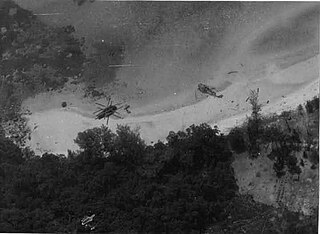
The Mayaguez incident took place between Kampuchea and the United States from 12 to 15 May 1975, less than a month after the Khmer Rouge took control of the capital Phnom Penh ousting the U.S.-backed Khmer Republic. After the Khmer Rouge seized the U.S. merchant vessel SS Mayaguez in a disputed maritime area, the U.S. mounted a hastily-prepared rescue operation. U.S. Marines recaptured the ship and attacked the island of Koh Tang where it was believed that the crew were being held as hostages. Encountering stronger than expected defences on Koh Tang, three United States Air Force helicopters were destroyed during the initial assault and the Marines fought a desperate day-long battle with the Khmer Rouge before being evacuated. The Mayaguez's crew were released unharmed by the Khmer Rouge shortly after the attack on Koh Tang began. The names of the Americans killed, including three Marines left behind on Koh Tang after the battle and subsequently executed by the Khmer Rouge, are the last names on the Vietnam Veterans Memorial.
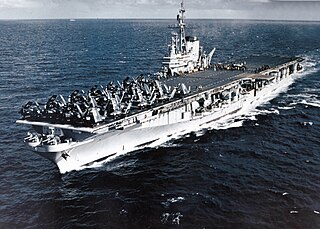
USS Midway (CVB/CVA/CV-41) is an aircraft carrier, formerly of the United States Navy, the lead ship of her class. Commissioned 8 days after the end of World War II, Midway was the largest warship in the world until 1955, as well as the first U.S. aircraft carrier too big to transit the Panama Canal. She operated for 47 years, during which time she saw action in the Vietnam War and served as the Persian Gulf flagship in 1991's Operation Desert Storm. Decommissioned in 1992, she is now a museum ship at the USS Midway Museum, in San Diego, California, and is the only remaining inactive U.S. aircraft carrier that is not an Essex-class aircraft carrier.

The battle of Dak To in Vietnam was a series of major engagements of the Vietnam War that took place between 3 and 23 November 1967, in Kon Tum Province, in the Central Highlands of the Republic of Vietnam. The action at Đắk Tô was one of a series of People's Army of Vietnam (PAVN) offensive initiatives that began during the second half of the year. PAVN attacks at Lộc Ninh, Sông Bé and at Con Thien and Khe Sanh,, were other actions which, combined with Đắk Tô, became known as "the border battles". The post hoc purported objective of the PAVN forces was to distract American and South Vietnamese forces away from cities towards the borders in preparation for the Tet Offensive.

The Patrol Craft Fast (PCF), also known as Swift Boat, were all-aluminum, 50-foot (15 m) long, shallow-draft vessels operated by the United States Navy, initially to patrol the coastal areas and later for work in the interior waterways as part of the brown-water navy to interdict Vietcong movement of arms and munitions, transport South Vietnamese forces and insert SEAL teams for counterinsurgency (COIN) operations during the Vietnam War.

The California State Capitol Museum consists of a museum in and grounds around the California State Capitol in Sacramento, California, United States. The building has been the home of the California State Legislature since 1869. The State Capitol Museum has been a property in the California State Parks system since 1982.
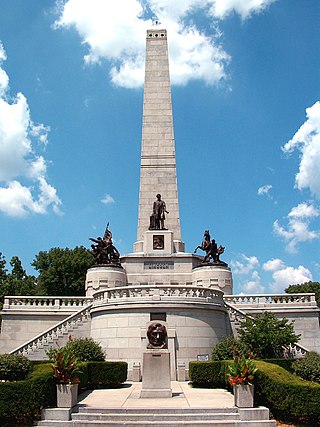
The Lincoln Tomb is the final resting place of Abraham Lincoln, the 16th president of the United States; his wife Mary Todd Lincoln; and three of their four sons: Edward, William, and Thomas. It is located in Oak Ridge Cemetery in Springfield, Illinois.

The National Society of Pershing Rifles is a US military-oriented honor society for college-level students founded in 1894 as a drill unit at the University of Nebraska–Lincoln. It is the oldest continuously operating US college organization dedicated to military drill. Originally named Varsity Rifles, members renamed the organization in honor of their mentor and patron, Lieutenant John J. Pershing, upon his departure from the university in 1895.

Henry Frank Leslie Burrows, known as Larry Burrows, was an English photojournalist. He spent 9 years covering the Vietnam War.

The Piasecki H-21 Workhorse/Shawnee is an American helicopter, the fourth of a line of tandem rotor helicopters designed and built by Piasecki Helicopter. Commonly called "the flying banana", it was a multi-mission helicopter, capable of being fitted with wheels, skis or floats.

The Sikorsky H-34 is an American piston-engined military helicopter originally designed by Sikorsky as an anti-submarine warfare (ASW) aircraft for the United States Navy. It has seen extended use when adapted to turbine power by the British licensee as the Westland Wessex and Sikorsky as the later S-58T. This type had a variety of names depending on the role and timing, but included the aforementioned Wessex, Seahorse, Seabat, and Choctaw. Most of the H-34 (S-58) used radial aviation engines, though other powerplants were employed, and the Wessex used predominantly twin gas turbines. Individual versions often had unique names, the type including everything from the U.S. Coast Guard HH-34F Seahorse was used for search and rescue, to the commercial Winnebago Heli-Home, to Canada's CH-126, the USMC it often went by "HUS" after its original designation in that service.

The Lockheed YO-3 Quiet Star is an American single-engined, propeller-driven aircraft that was developed for battlefield observation during the Vietnam War. Designed to be as quiet as possible, it was intended to observe troop movements in near-silence during the hours of darkness.

Stephen Wesley Pless was a major in the United States Marine Corps during the Vietnam War. He earned the Medal of Honor as a UH-1 Iroquois "Huey" helicopter pilot for rescuing soldiers trapped by heavy enemy fire.

Operation Lam Son 719 or 9th Route – Southern Laos Campaign was a limited-objective offensive campaign conducted in the southeastern portion of the Kingdom of Laos. The campaign was carried out by the armed forces of South Vietnam between 8 February and 25 March 1971, during the Vietnam War. The United States provided logistical, aerial and artillery support for the operation, but its ground forces were prohibited by law from entering Laotian territory. The objective of the campaign was the disruption of a possible future offensive by the People's Army of Vietnam (PAVN), whose logistical system within Laos was known as the Ho Chi Minh Trail.

Operation Hump was a search and destroy operation initiated by United States and Australian forces on 5 November 1965, during the Vietnam War.
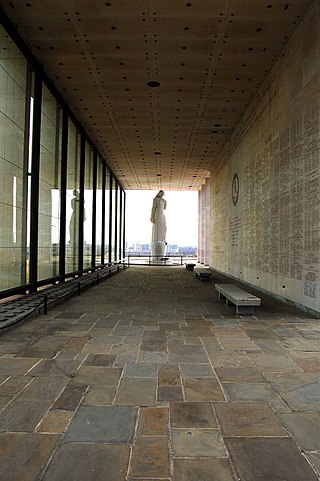
The Virginia War Memorial is a 1955 memorial in Richmond, Virginia, originally dedicated to Virginians killed in World War II and the Korean War. In 1980, the Shrine was enlarged to honor those Virginians killed in action in the Vietnam War. In 1996, the names of Virginians killed in action during Desert Storm/Desert Shield were added. Today, there are nearly 12,000 Virginians whose names are engraved on the Shrine of Memory's glass and stone walls. Reflecting the different character of war today, Virginia has created a special Memorial Shrine to honor the over 250 Virginians killed in the Global War on Terrorism.

David Herbert McNerney was a United States Army soldier and a recipient of the United States military's highest decoration—the Medal of Honor—for his actions in the Vietnam War. A native of Massachusetts who moved to Houston, Texas, as a child, McNerney served in the U.S. Navy during the Korean War before enlisting in the Army. He was recognized with the Medal of Honor when, as a first sergeant in Vietnam on March 22, 1967, his company came under attack by a numerically superior North Vietnamese force. They nearly split the company and killed or wounded all of the officers. Although wounded, McNerney took command of the company and organized the unit's defense, exposing himself to hostile fire to mark and clear a helicopter landing site. He refused to be evacuated for an entire day until a new commander came. After serving four tours of duty in Vietnam and 16 years of service, McNerney retired in 1969 and began a career as a customs inspector in Houston.
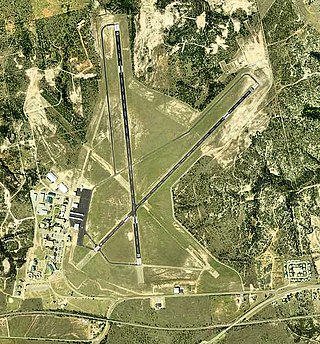
Avenger Field is a Texas airport in Nolan County, three miles west of Sweetwater. The National Plan of Integrated Airport Systems for 2011–2015 called it a general aviation facility.

The Bell H-13 Sioux is an American single-engine light helicopter built by Bell Helicopter and manufactured by Westland Aircraft under license for the British military as the Sioux AH.1 and HT.2.
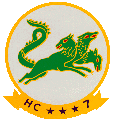
Helicopter Combat Support Squadron Seven (HC-7) was a helicopter squadron of the United States Navy established on 1 September 1967 and disestablished on 30 June 1975.



















